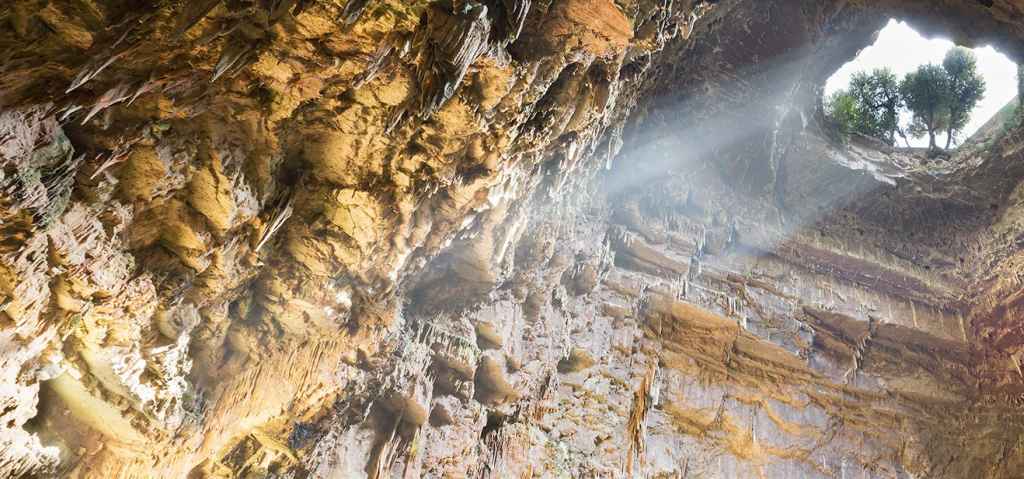

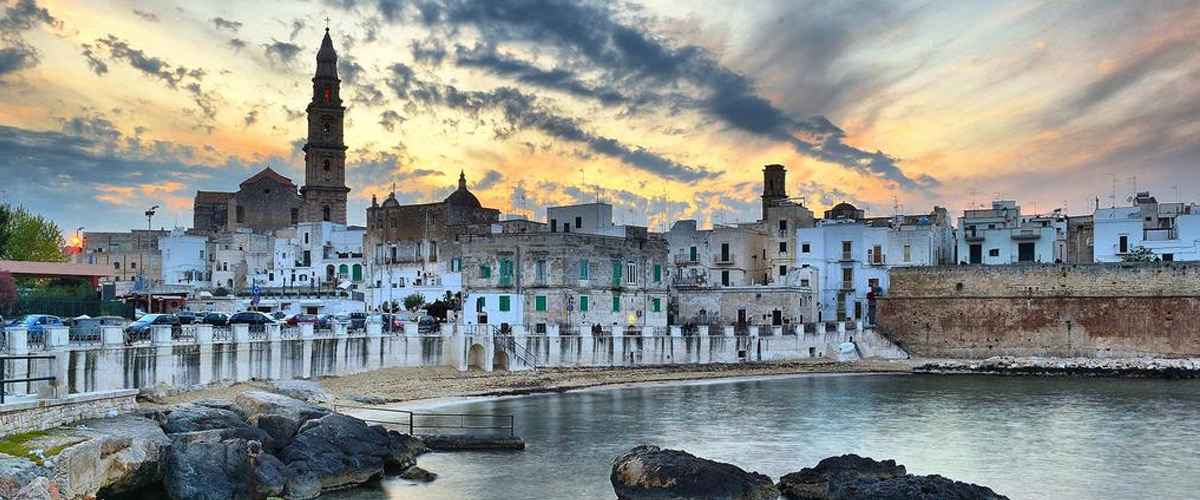



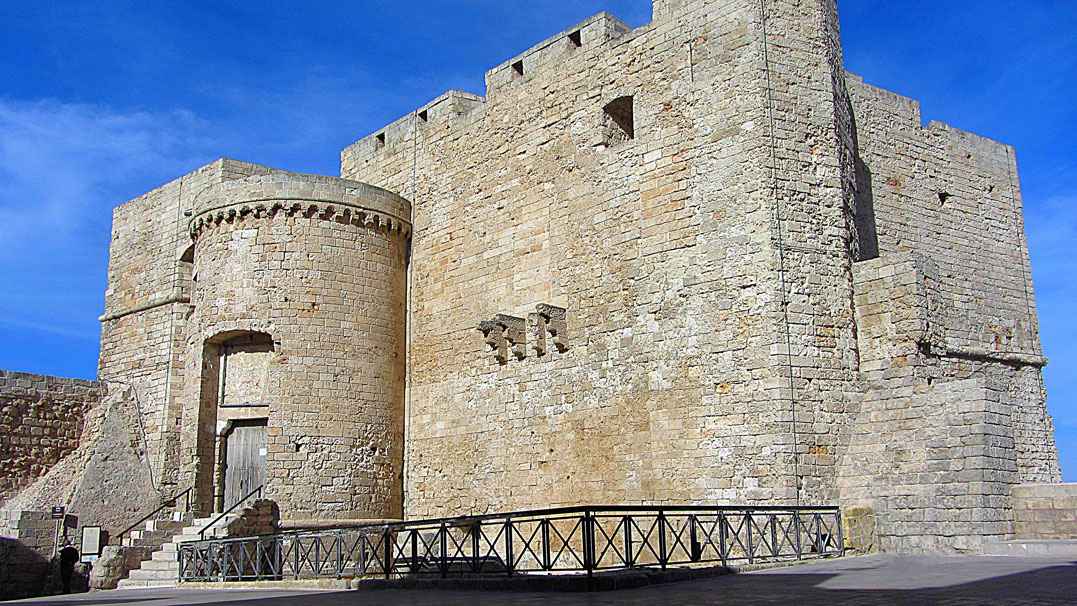
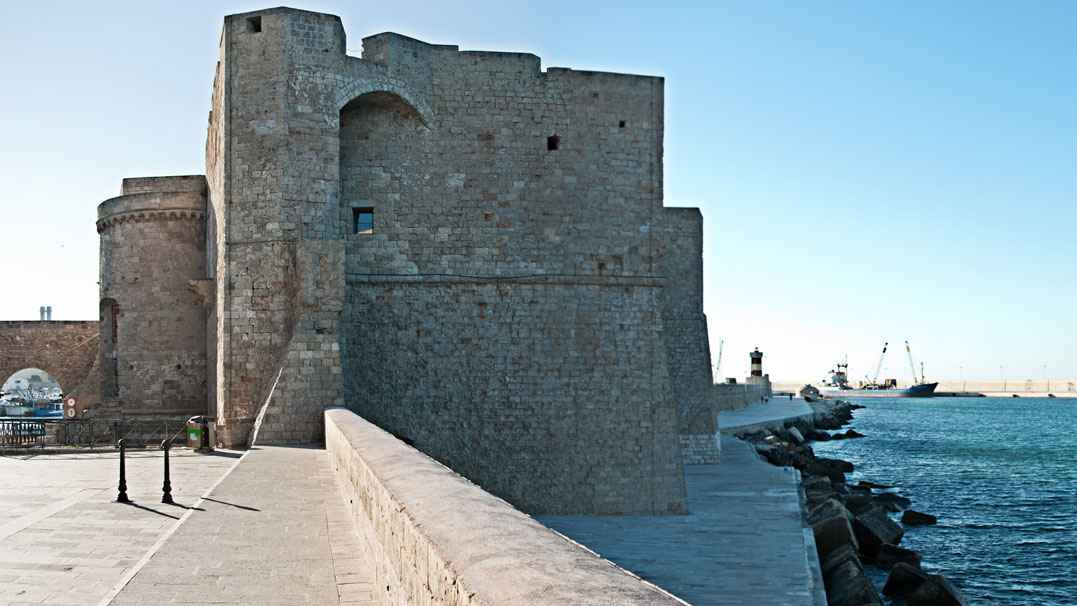
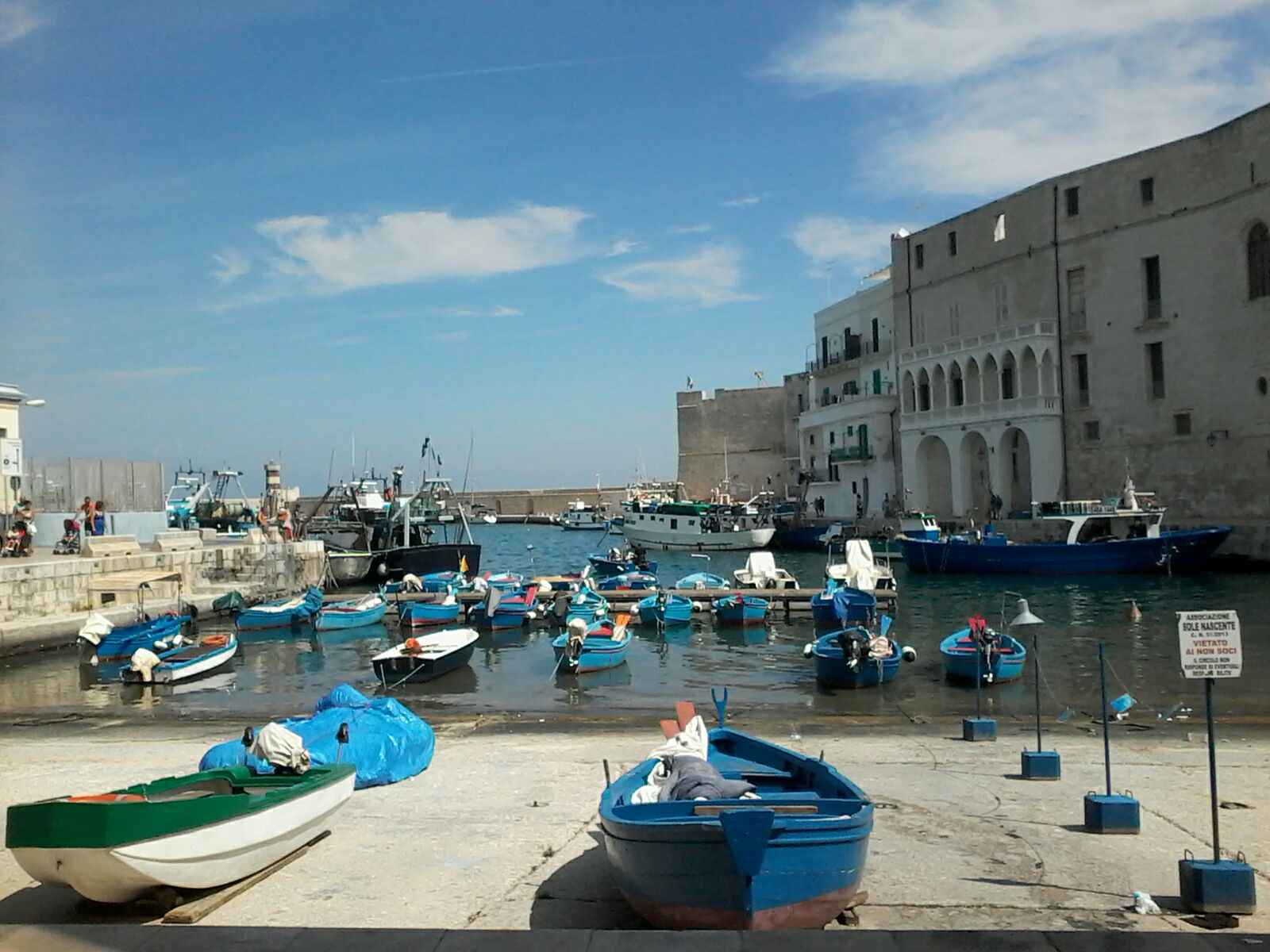
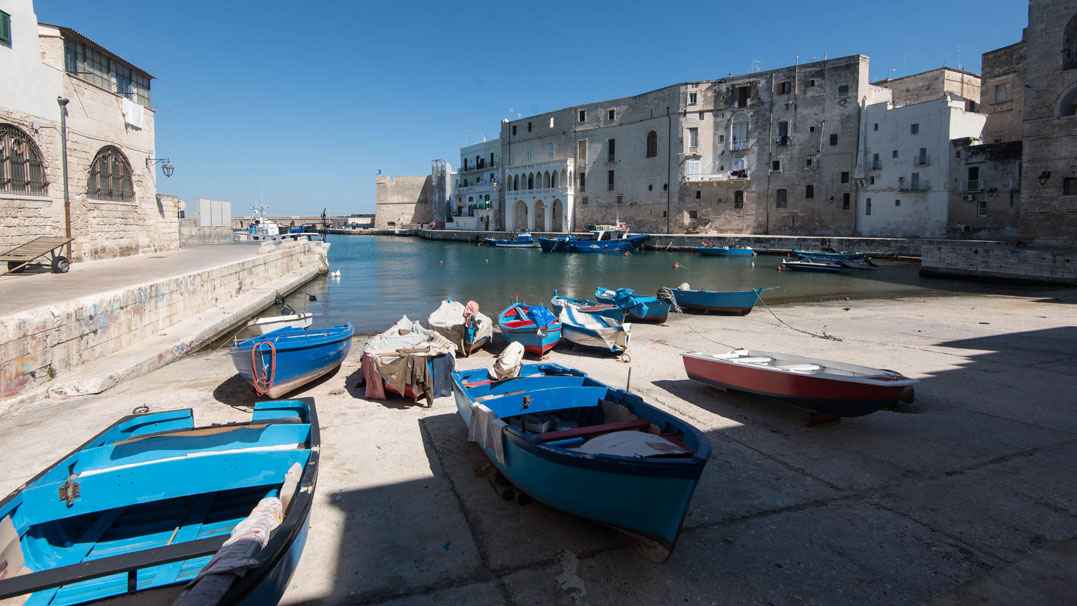
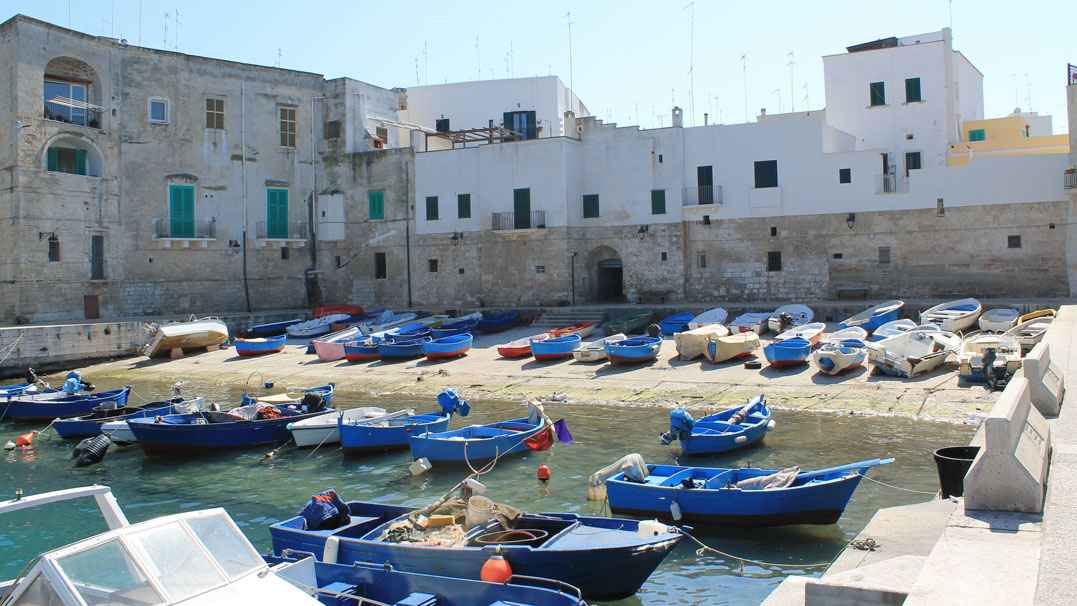
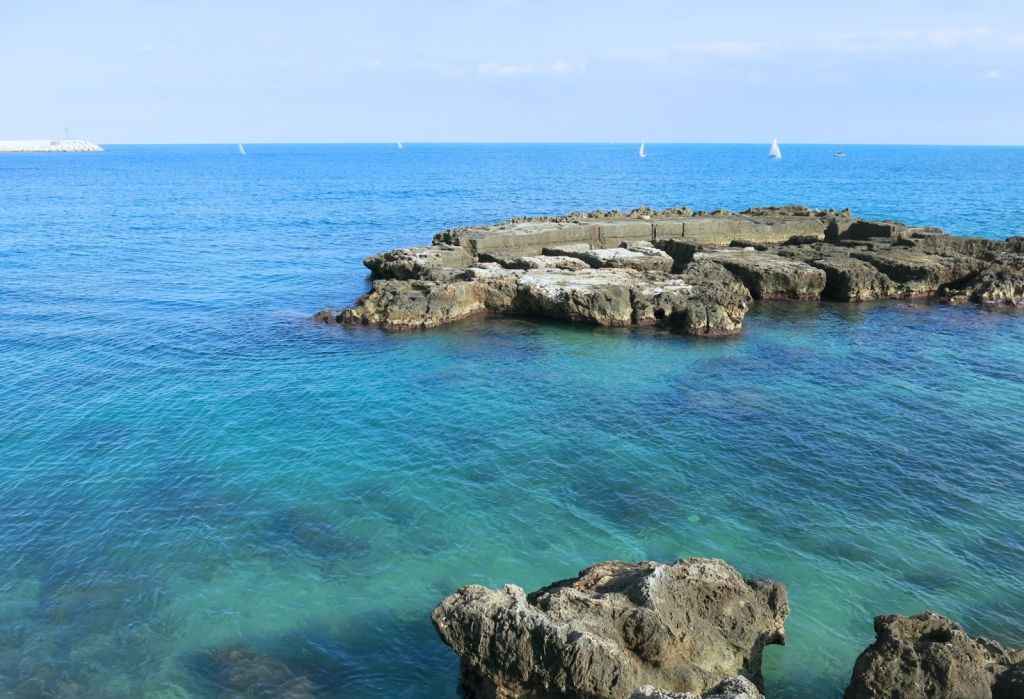
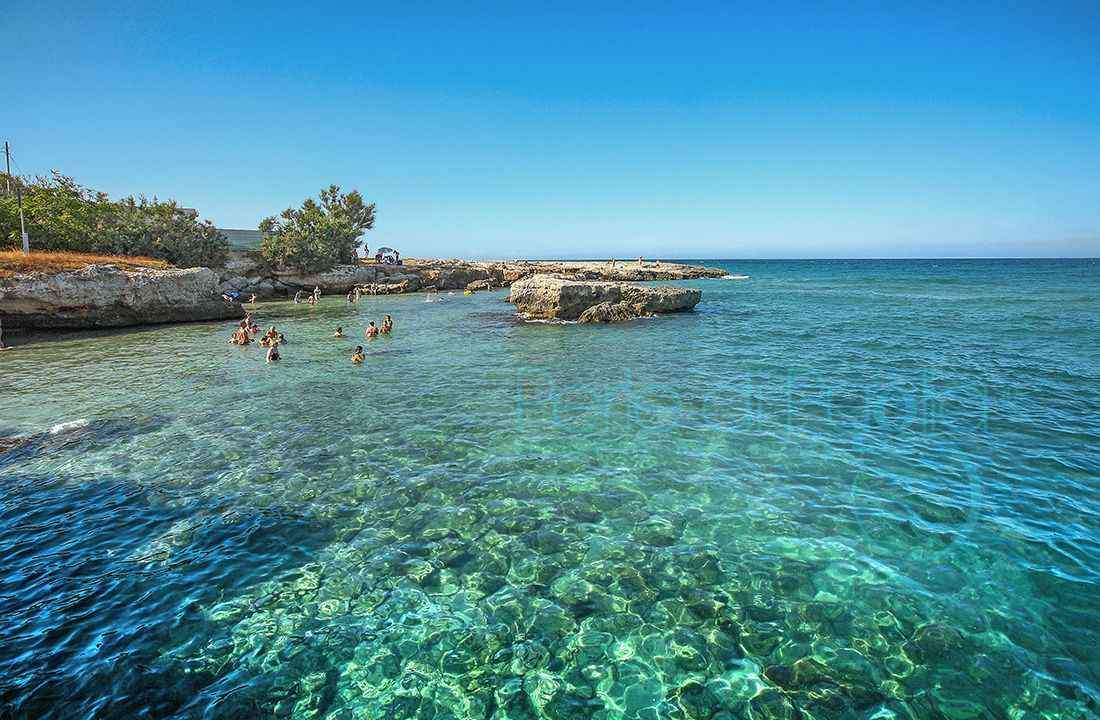
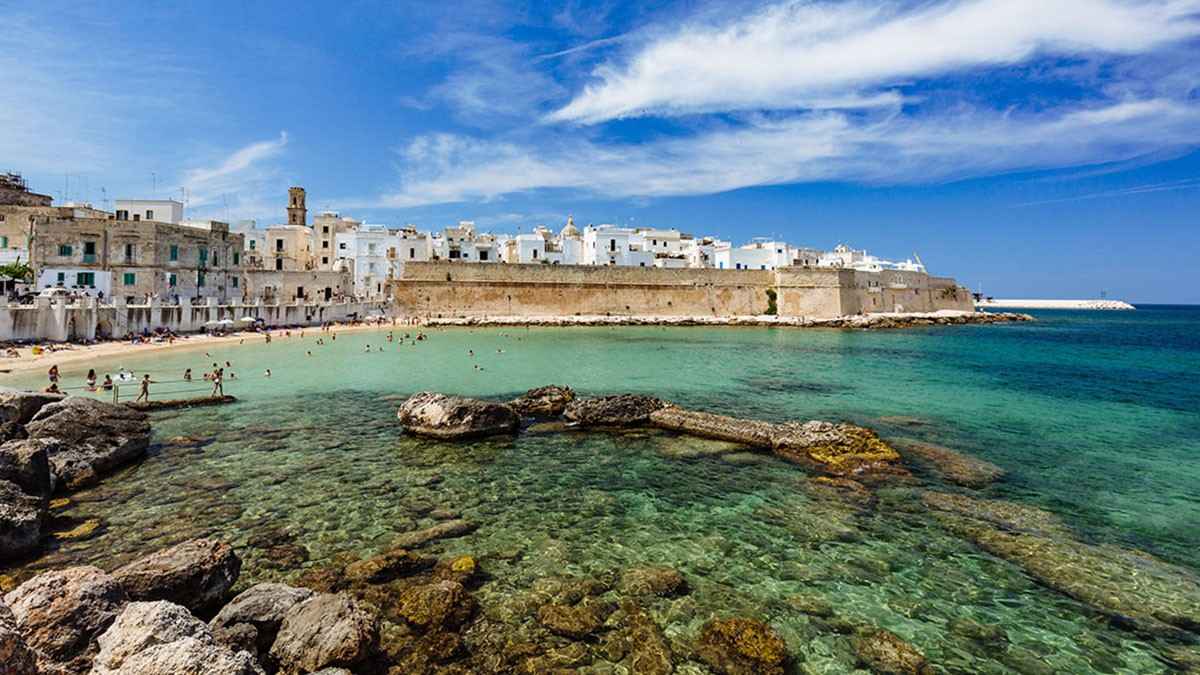
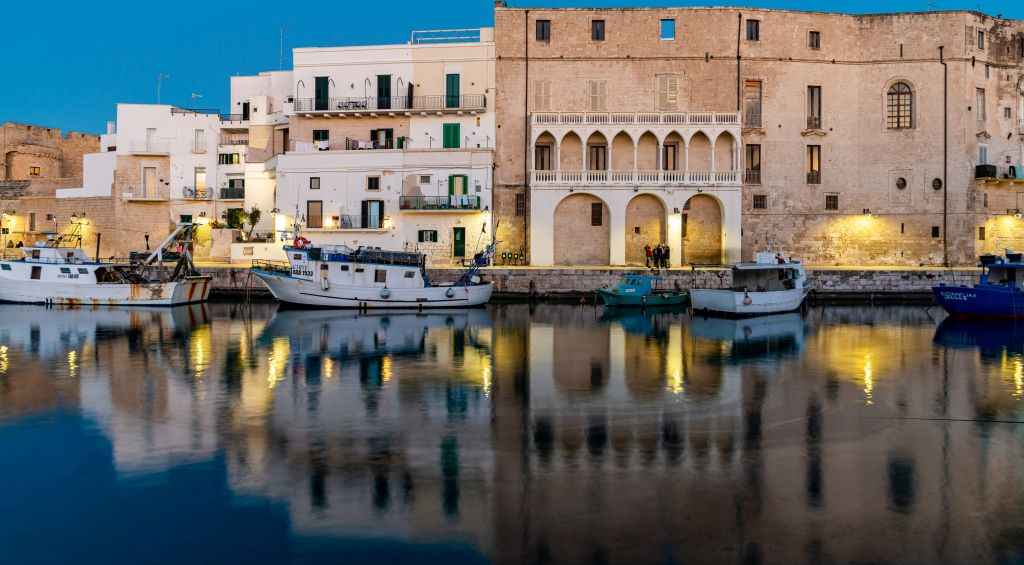
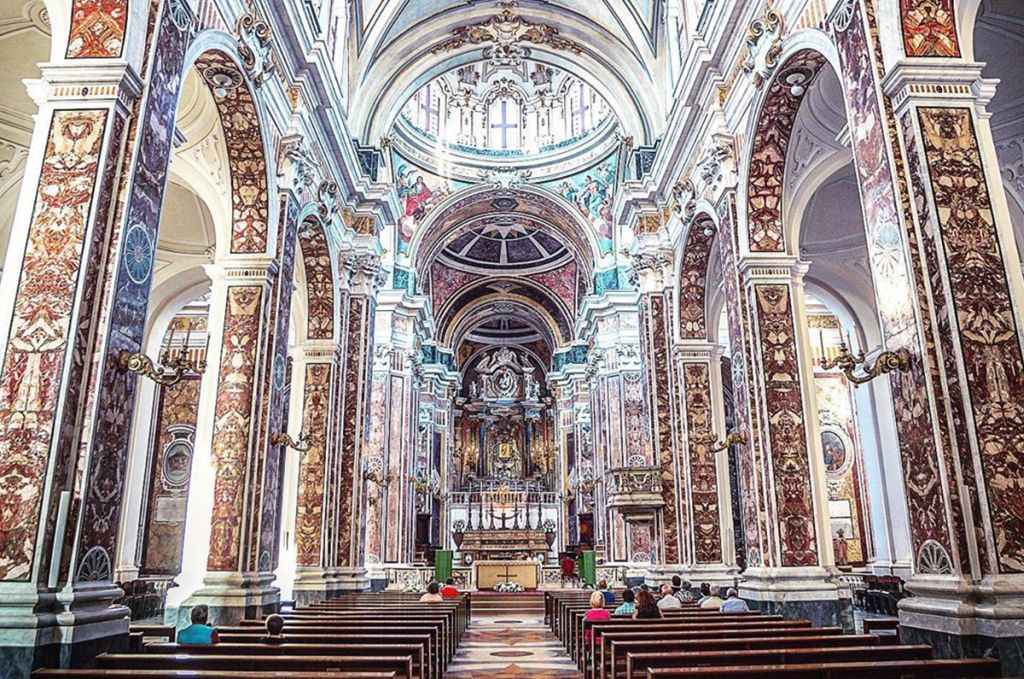
Port city, historical and functional in equal parts, Monopoli impresses the visitor with the medieval churches and castles overlooking the Adriatic.
Monopoli is the "city of 99 districts", with a splendid historical center of early medieval origin. It owes its nickname to the division of the countryside into districts: their toponyms evoke ancient houses that have now disappeared, a farm, a church.
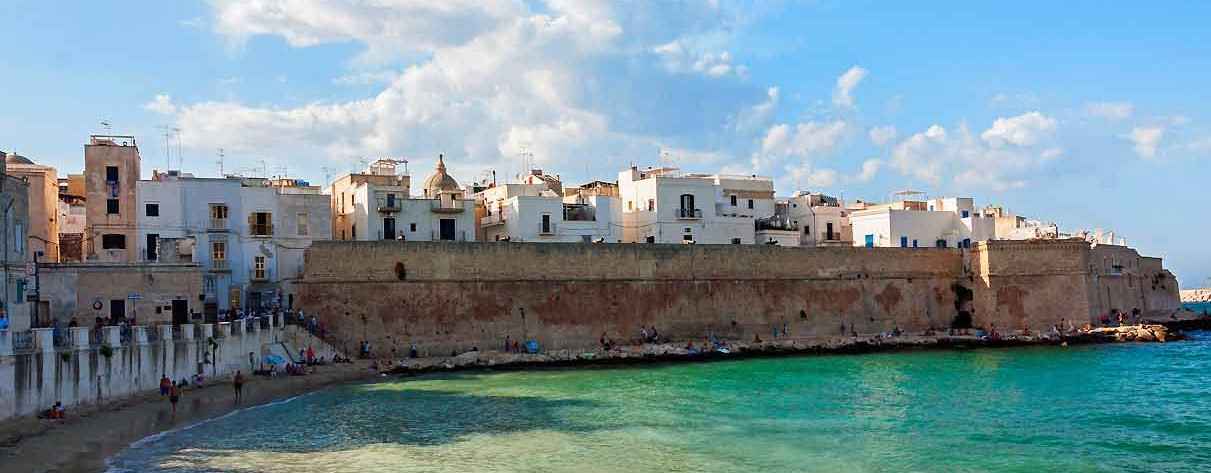
The historic center is characterized by narrow streets steeped in history, with ancient buildings and newsstands in honor of the patron, the Madonna della Madia to whom a particularly engaging party is dedicated that attracts many tourists. To give an even more suggestive touch are the surrounding walls still present, which stand out with the visitable towers and some cannons. Not many people know that in Monopoli there is one of the largest squares in Italy, or the eighteenth-century Piazza Vittorio Emanuele, which the inhabitants simply call the Borgo. Used as a meeting and living place in the city, it occupies an area of 18 thousand square meters and appears as a large rectangle cut by the extension of the Corso, which gives rise to two smaller rectangles. One of the two squares houses the War Memorial, inaugurated on May 24, 1928 in honor of the 300 fallen monopolists of the First World War. It represents a colossal legionary with a drawn sword in one hand and the winged victory in the other, at whose feet there is a mother who blesses her son who goes to war and another woman who comforts a widow and an orphan of a fallen soldier . A curiosity concerns the chain that goes around the monument: it is the one recovered from the anchor of the battleship "Benedetto Brin", the Italian battle ship sunk in 1915 in the port of Brindisi. On the other side is the fountain, built in the 1930s but rebuilt in 2011. Another peculiarity of this square is the presence of air-raid shelters, underground tunnels where the population found shelter during the British bombing during the Second World War, which can now be visited .
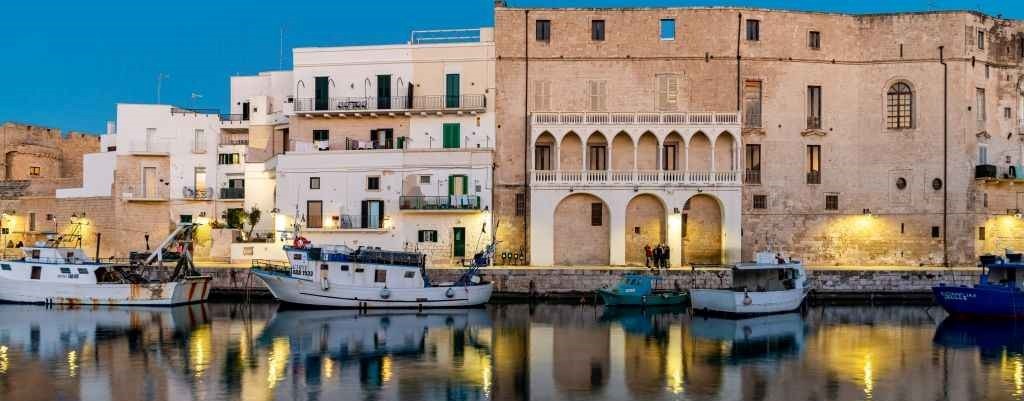
A fundamental part of the city's identity is the port, protected by two piers: the Margherita wharf and the Tramontana dam, which cannot be approached due to the presence of a rocky escarpment. Together with the Port of Barletta, it has been recognized as one of the oldest and most famous ports of the east coast of Puglia because it boasts a very ancient history: there are Venetian, Gothic and Byzantine architectural testimonies. As far as religious buildings are concerned, the suggestive church of Purgatory in which the ossuary of the friars is located is worth visiting. The Cathedral of Santa Maria della Madia presents itself with its monumental facade and the beautiful Baroque bell tower; its interior houses several works including the Madonna della Madia, a perfectly preserved Byzantine icon displayed on the altar. The church of San Domenico, with its elegant Renaissance façade with three floors divided by columns and pillars, houses the Miracle of Soriano di Palma il Giovane painting. Among the many rock churches outside the town stands Santa Maria Amalfitana, a Romanesque church erected on a cave and remodeled in various eras: of the three semicircular apses, the middle one is particularly interesting, surrounded as it is by slender half-columns, as well as the window of which are preserved the original shelves of Lombard art dated XIII century.

Just outside the center there is also the beautiful abbey castle of Santo Stefano, a complex raised by Benedictine monks later transformed into a hospital. At the end of the fourteenth century it was ruled as a fief by the Knights of Malta and then privatized in the days of Joachim Murat. The abbey also has a moat and walls, the keep and the drains, while to the north you can see the remains of the portal of the ancient Romanesque church. The Basilica, however, was founded at the end of the eleventh century, consecrated by Urban II in 1089: for centuries it represented the gateway between the Christian West and Eastern spirituality and it was here that Pope Urban II gathered the Ecumenical Council in 1098. Over the years the structure has undergone changes, renovations and restorations. Today it appears with its rectangular plan, the courtyard in the center with around the various rooms once used as settlers' homes or for other uses. It is located on a small island and is therefore surrounded on three sides by the sea. Among the many attractions in Monopoli it is worth admiring also one of the many Fortified Masserie, buildings that characterize the rural heritage of the city and which are a testimony of the relationship between men, agricultural work and production. What distinguishes the Fortified Farms is the fact that they were built due to the geographical conformation of Puglia as a defense against the continuous invasions that generally came from the sea. They were the center of agricultural and social life, where they were produced, preserved and prepared to market the products. Today many have been renovated keeping the old charm intact and used as accommodation facilities.
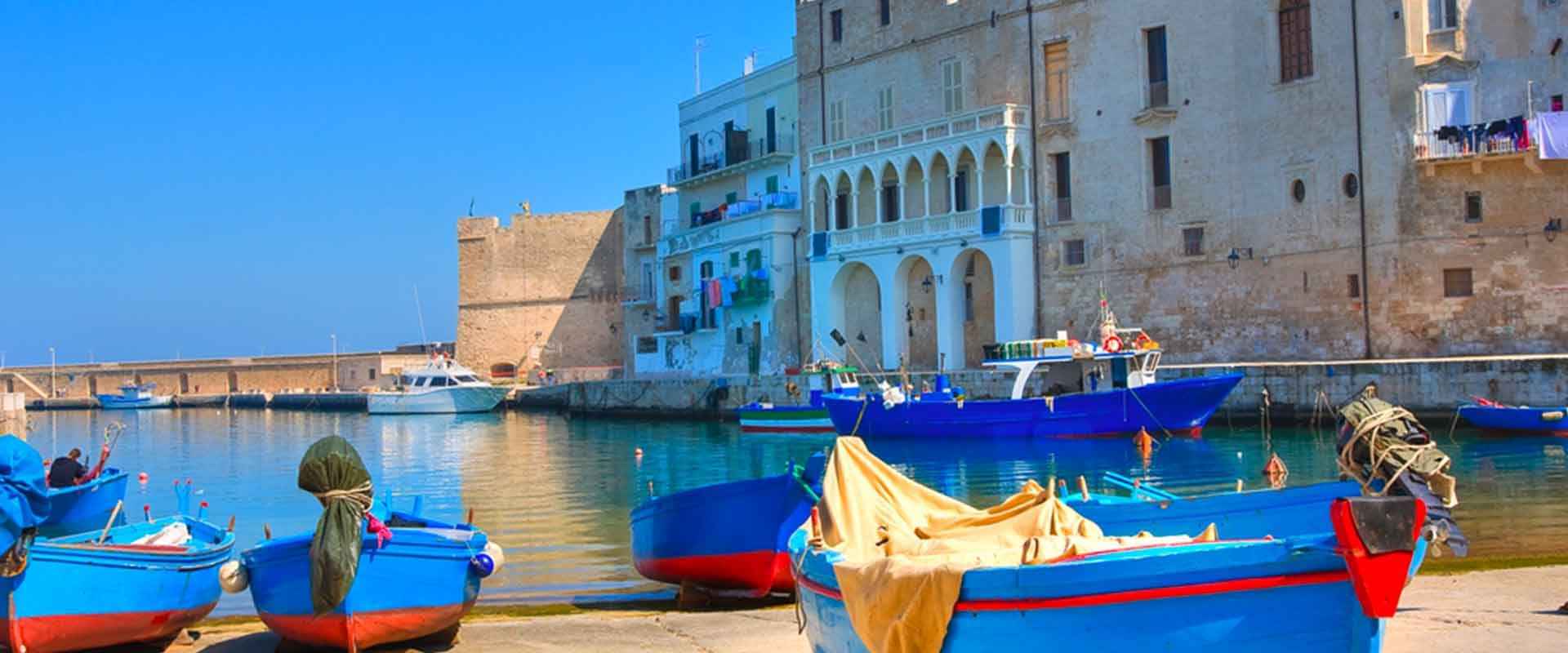
The fortified farms of the Monopoli countryside date back to 1600. They had a tower and a drawbridge to defend themselves. Among the most beautiful is the Masseria Caramanna which still preserves the ancient nucleus of the large quadrangular tower with the drawbridge, the bell tower, the loopholes and the drains. Masseria Spina Grande stands out among others for its bright red color. This is also beautiful inside and houses a small peasant museum. Masseria Conchia has a double bell tower and together with the imposing staircase they give the idea of the wealth and magnificence of the ancient owners. And finally, the Masseria Cavallerizza, stands on a hill and was built by order of Alfonso of Aragon. Here the horses of Venice were bred, and it was precisely in the possessions of this farm that the Apulian morello, an excellent breed for battle, was born from a cross between local and Arab horses.
The medieval Monopoly was rich in agricultural villages called "farmhouses", then destroyed or abandoned due to the raids of the Byzantine troops contending the area for the Normans. The church of Sant'Angelo in Francisto, part of a female Benedictine monastery active until the end of the fourteenth century, is the last remnant of the large and ancient farmhouse of Frangestro.
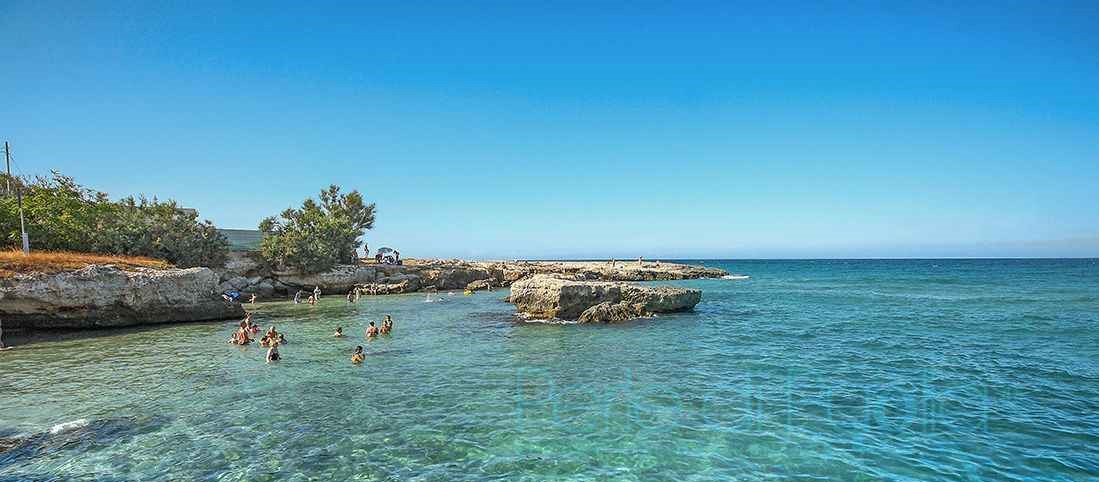
In summer, tourists also love Monopoli for its sea and its unique coastline, made up of beaches hidden in greenery and rocks overlooking the sea. A suggestive scenario full of ravines. Some beaches are literally found, but well worth the effort. Like Cala Corvino, a small cove north of Monopoli that makes its way into a high cliff. The beach, perhaps also for its small size, is not very popular, the path to reach it is not so easily practicable, but the scenery will repay you for the effort. Or like Cala Monaci, a small free beach whose cliff hides some caves. Or Cala cozze, which recreated only a few years ago. Here the water is nothing short of crystalline and the shallow and sandy seabed. Perfect for staying immersed in the hours.
A handful of kilometers from Monopoli there is another attraction not to be missed, the Castellana Caves, a fascinating karst complex of underground caves of considerable speleological and natural importance. It is one of the most beautiful and spectacular in Italy, located around 1.5 km from the town of Castellana-Grotte, and includes caves that develop for a length of 3348 meters and reach a depth of 122 meters from the surface. The visit winds along a 3 km route at about 70 meters deep, in a scenario that includes canyons, abysses, fossils, stalactites, stalactites and concretions with the most incredible shapes and colors.
